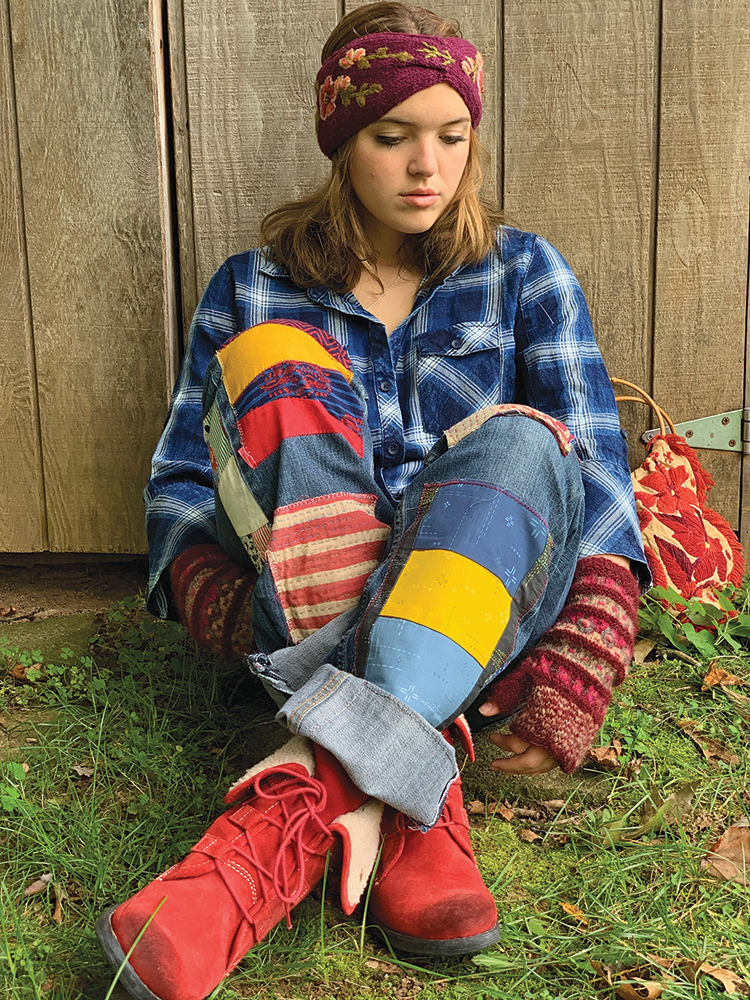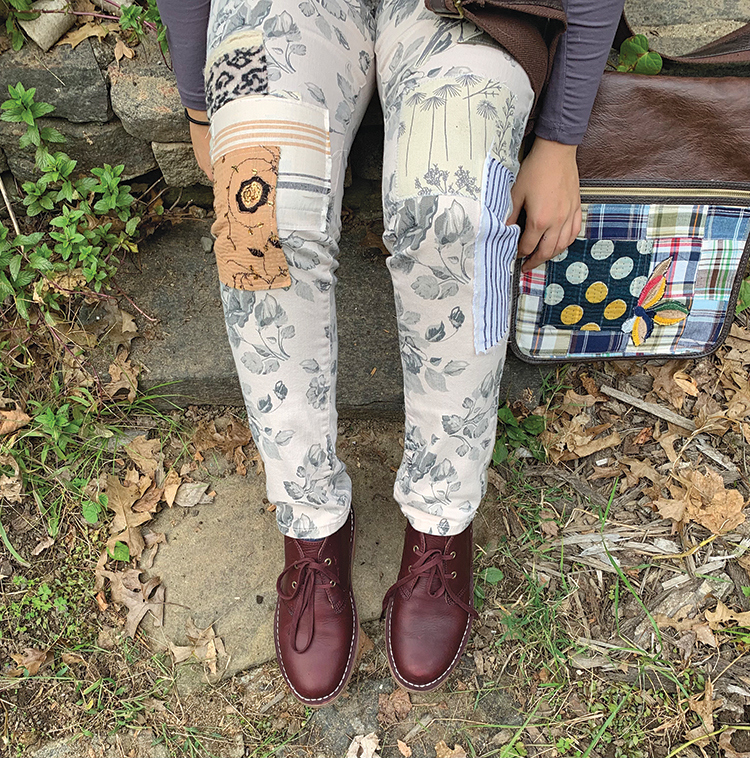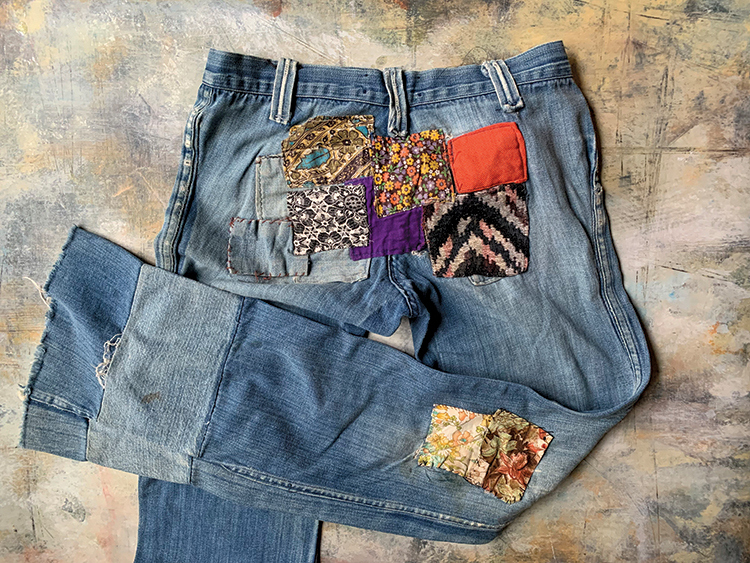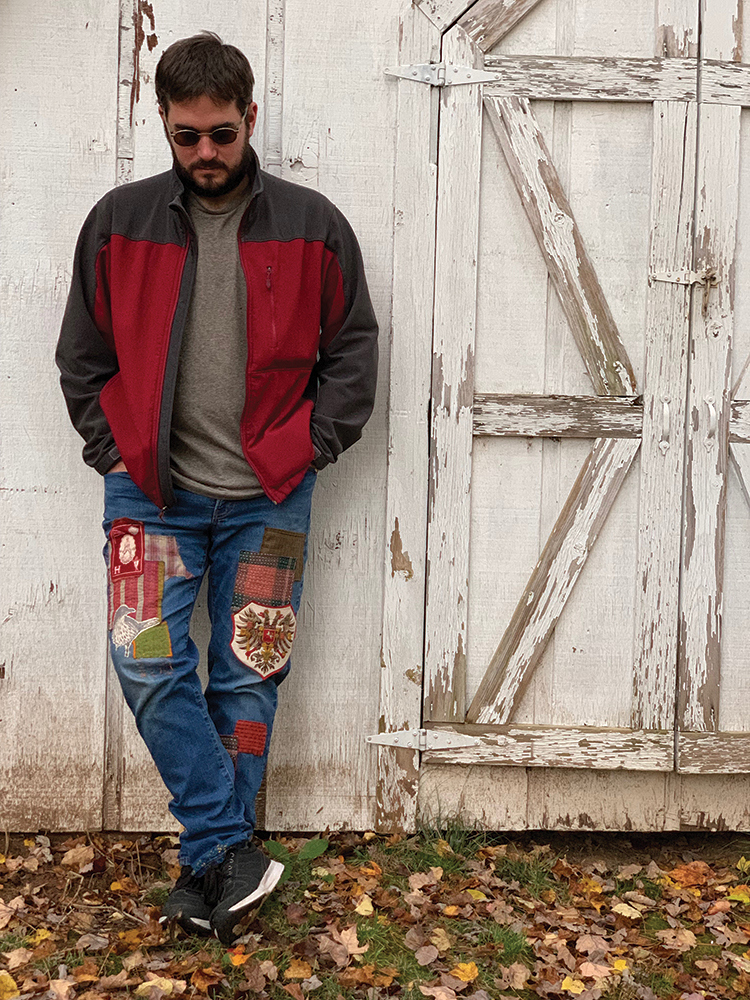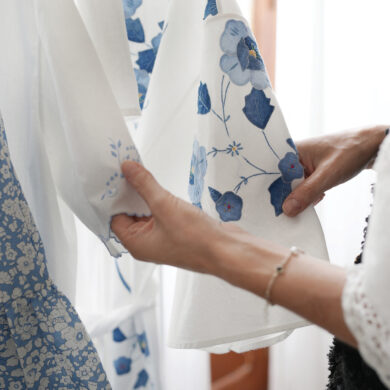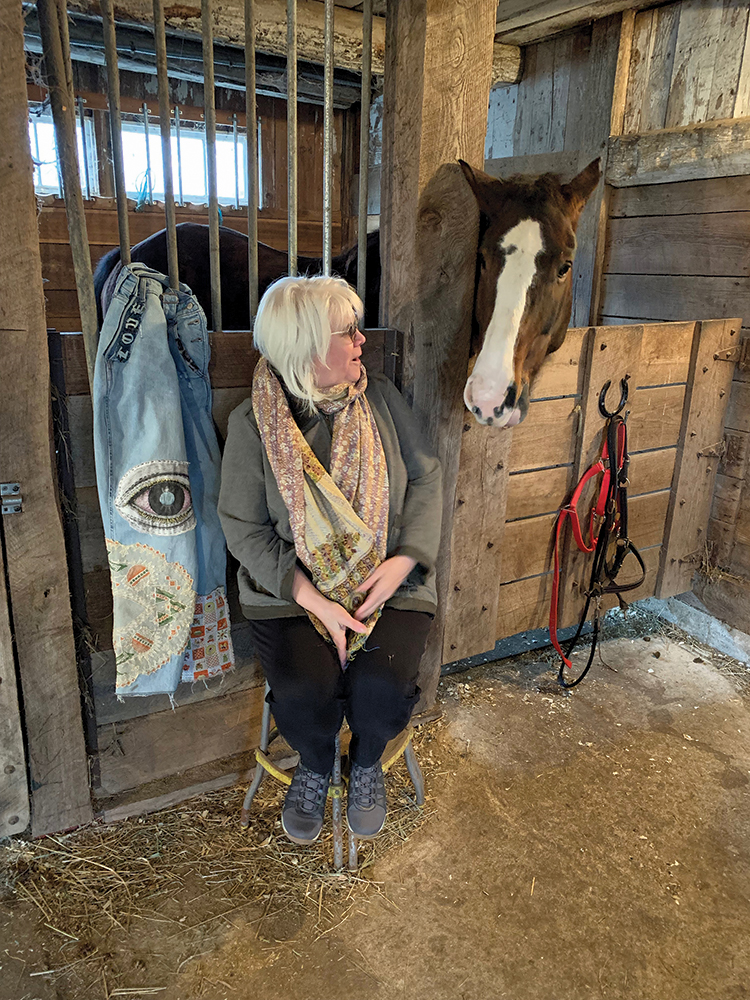
Sometimes things do come full circle, like patchwork jeans! I made them in high school, and it was also my side hustle! Patching and embroidering jeans, shirts, and jackets for myself and for other students. Seeing them on the runway, across the pages of high fashion magazines and on social media is really exciting and a bit nostalgic. I love that anyone can make these with a few helpful hints, scraps of fabric, and some fun vintage textiles. Oh, and a seam ripper!

What started as a blog post for the Oliso website (I am the Director of Content and Community Relations for them) turned into a marathon of making patchwork clothing for myself, family, and friends. Hand stitching plays a big part in much of my work, so I love incorporating it into my patchwork garments. When I go thrifting, I also look for embroidered shirts that I can cut up to use as appliques. Adding a paper-backed fusible web to the back will help it from fraying and looks like you did a lot more work than you really did.
Some of my friends have sent and entrusted me with their worn loved jeans to cut apart and stitch on. It’s kind of a blind faith type of thing since I really don’t take directions of what they want. I have part of them here with me, so I start building the design with things that remind me of them! However, with that said, I sometimes do have to limit myself and not go overboard. I do want them to wear them, after all.
Everyone has a pair of well-worn jeans or overalls, right? It’s a blank canvas to me.
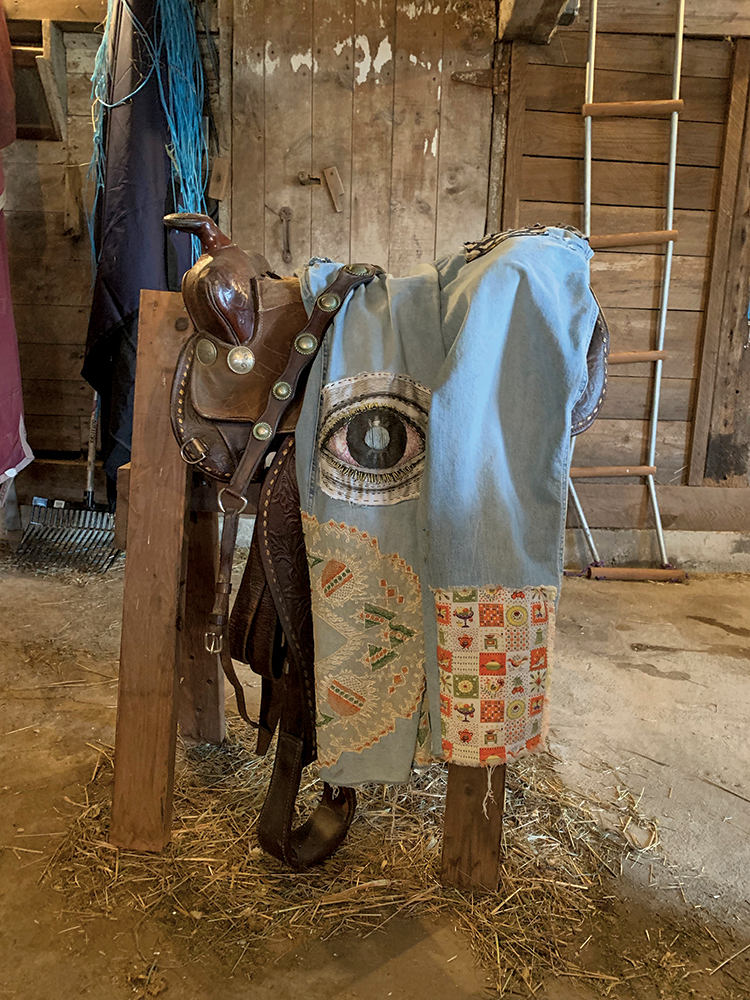
Supplies
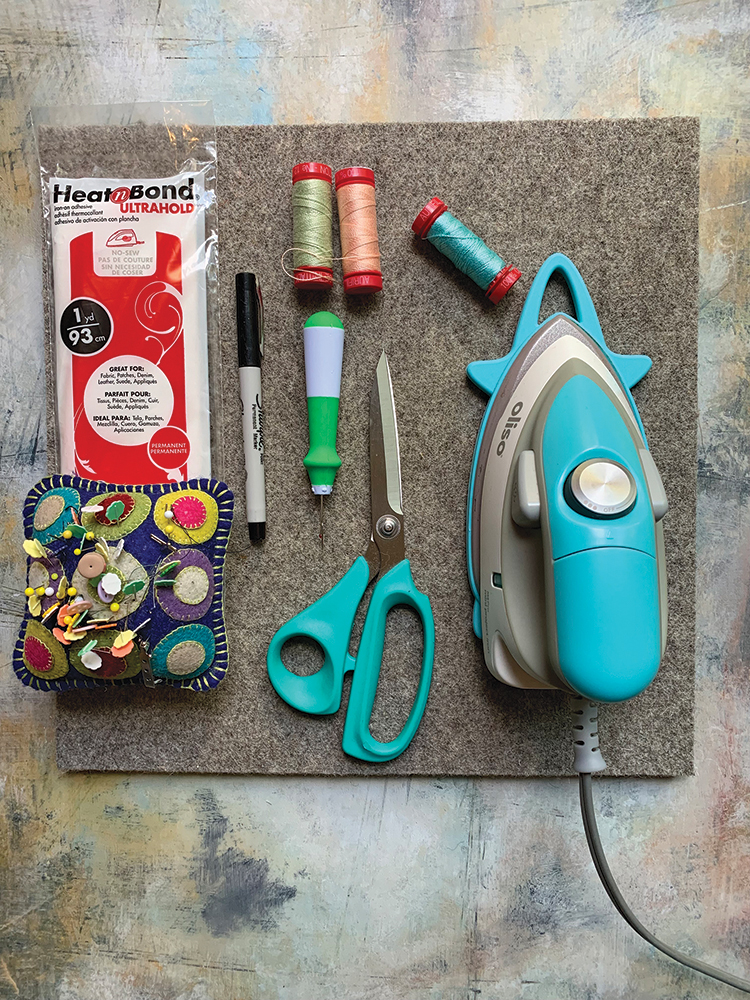
- Jeans, your own or thrifted
- Seam ripper, scissors, common pins, needles for 12 wt. thread, jeans needle (14) if you are using a sewing machine
- Oliso mini project iron
- Variety of 12 wt. thread or embroidery floss
- Heat n Bond or another paperbacked fusible web
- Patches, vintage laces, Kantha quilt squares, hand-printed linens, unusual scraps of fabrics, applique pieces, and orphan quilt blocks
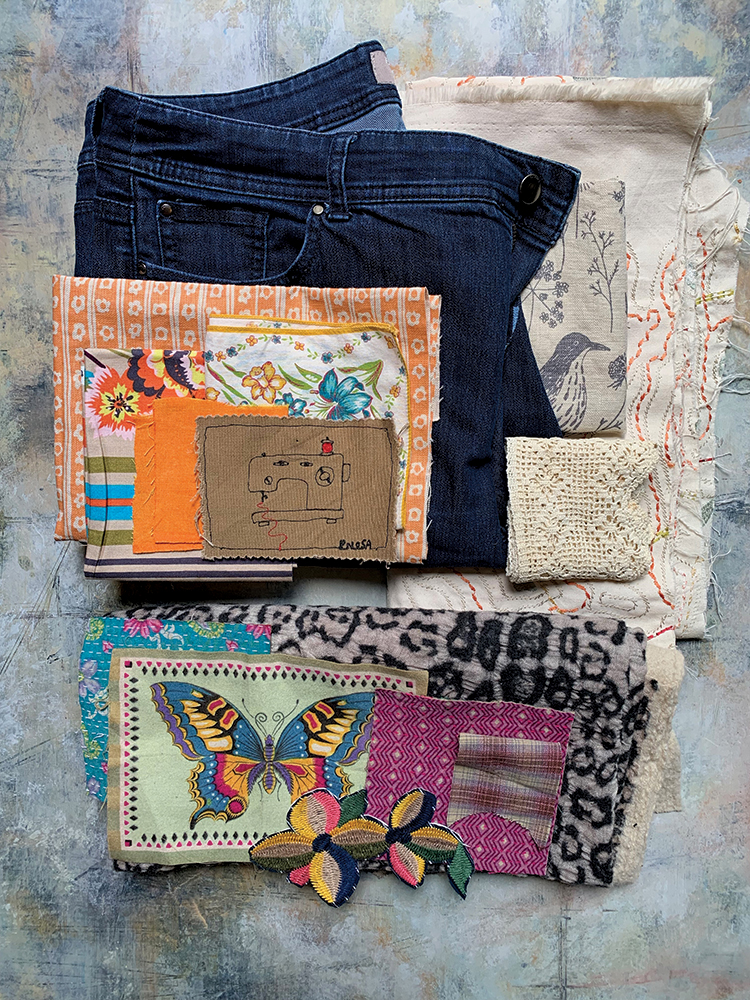
Instructions
1. Take out one seam on each leg of your jeans with your seam ripper. Jeans often have one French seam, which is more difficult to remove. Pull all remaining threads after the seam is open and press flat.
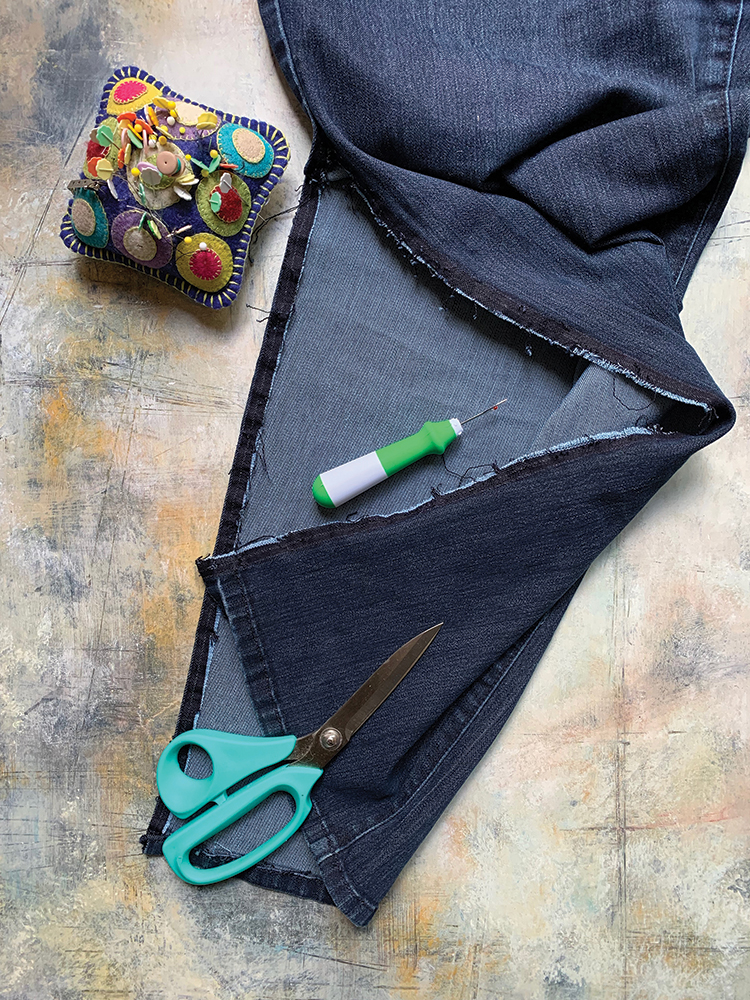
2. Start arranging items on your jean legs. Cut textiles and layer until you achieve the design you are satisfied with. You can always add more later. Take a photo for placement.
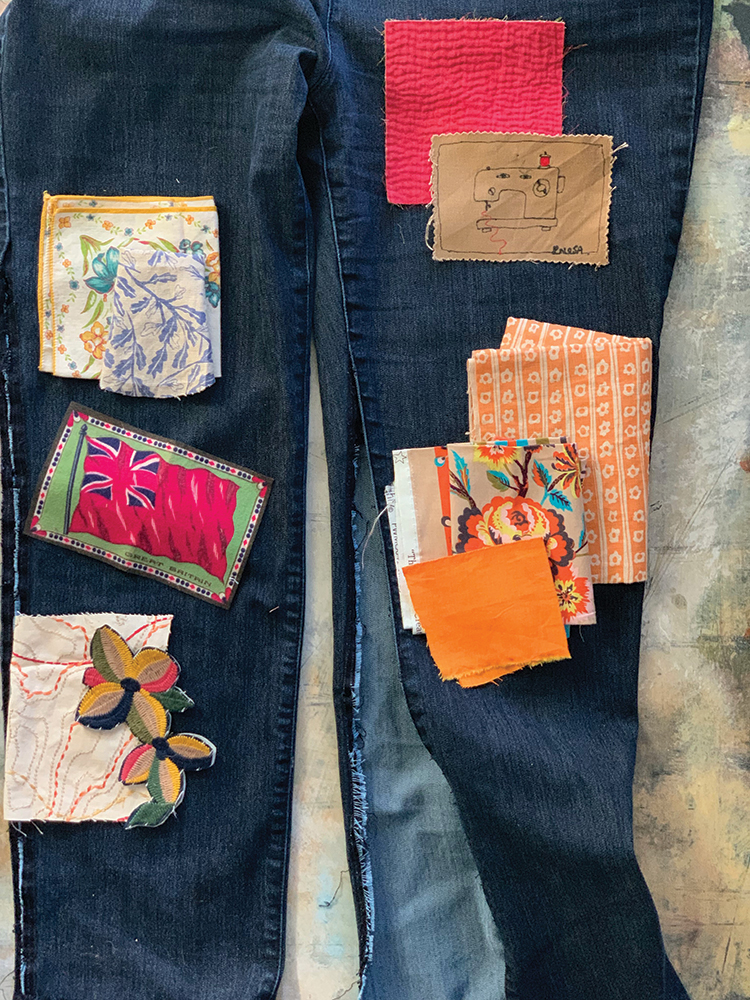
3. Measure and cut the fusible paperback web about ¼” to ½” smaller than the patch.
4. With a hot dry iron, press the fusible web, paper side up, onto the backside of your patch. Let cool and remove paper back. You can crack the paper along one edge to peel easier.
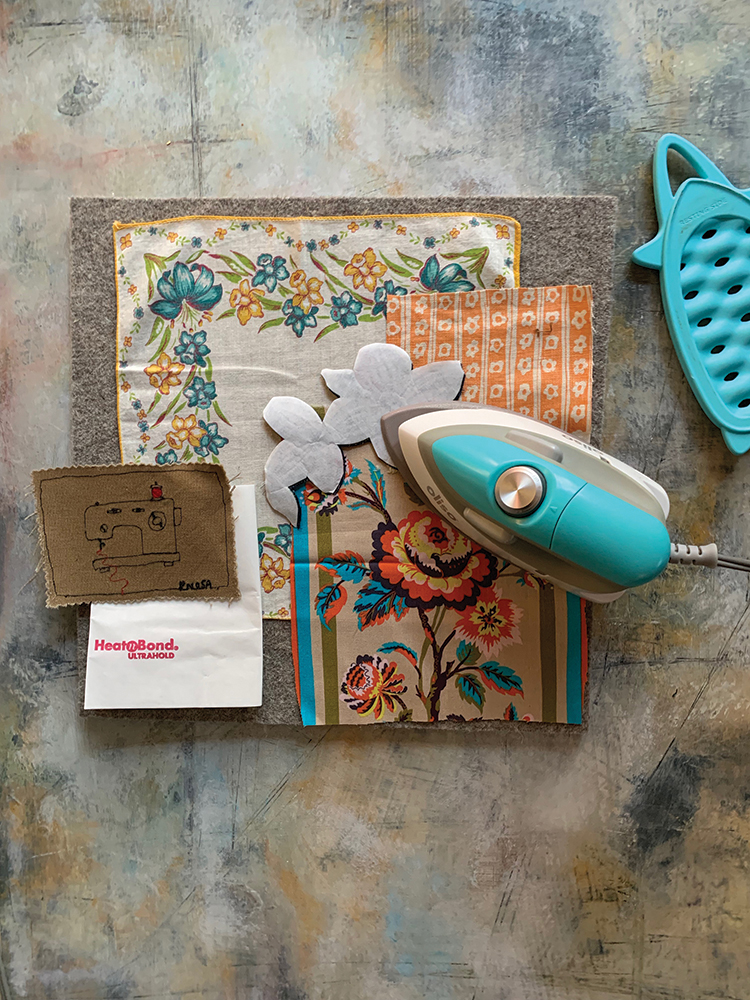
5. Refer to your placement photo and press one patch onto your jeans/jacket/pillow or tote. The denim is thick, so you may need to hold the iron in place for several seconds. Be careful not to scorch and press from the inside as well. Continue layering.
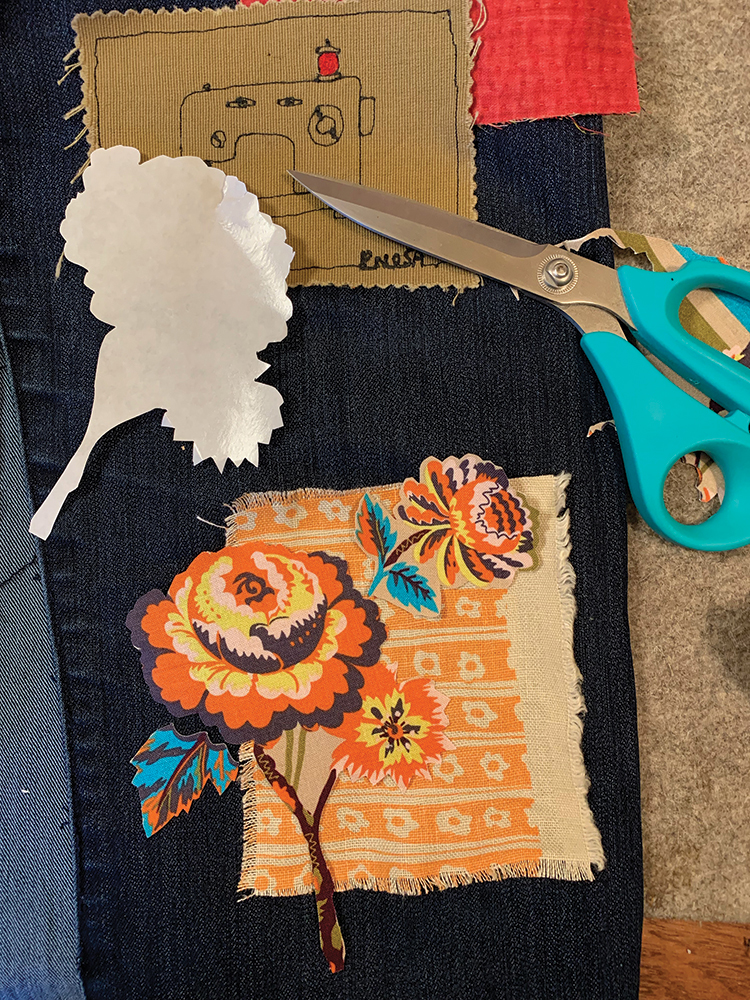
6. Once everything is held in place, you can secure it with hand stitching or on your sewing machine. Leaving a border around the patches without the fusible web will make it easier to hand stitch.
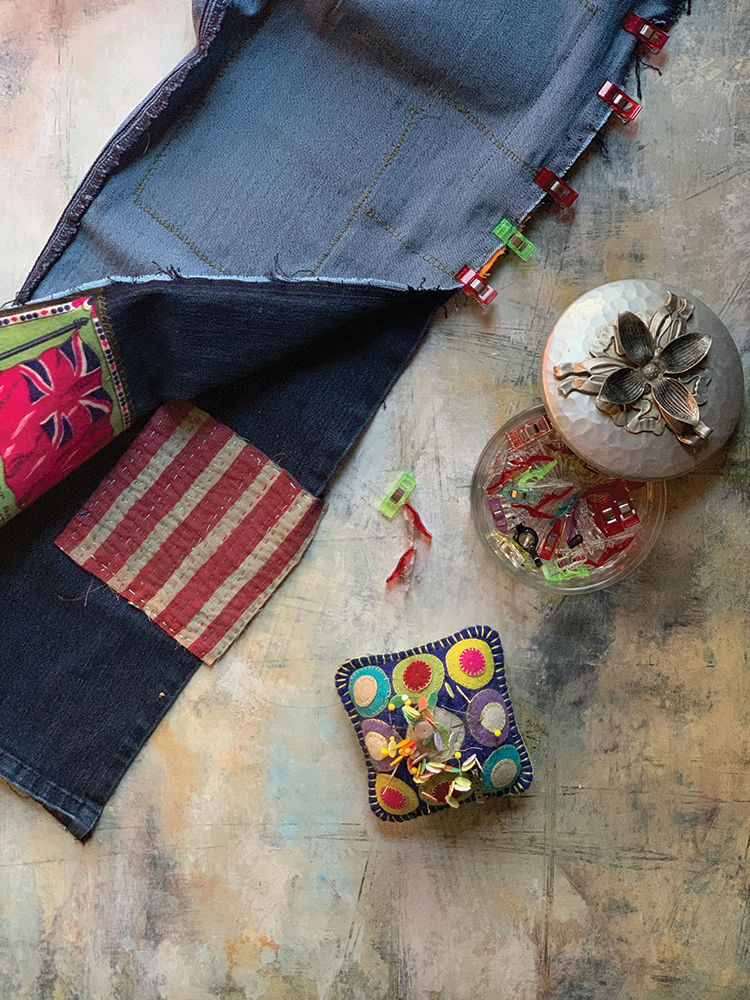
7. You can also add embroidery or Sachiko stitches to your patches prior to adhering the fusible and to the jeans.
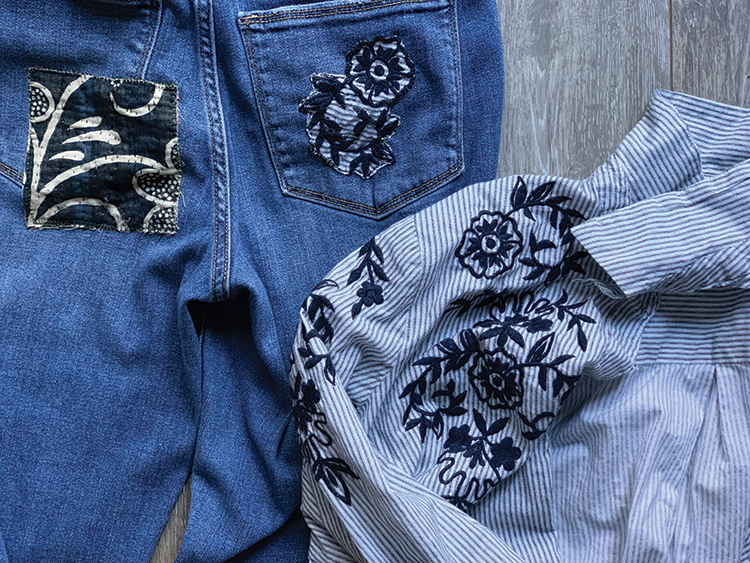
8. Turn your jeans inside out and sew up the side seam and hem.
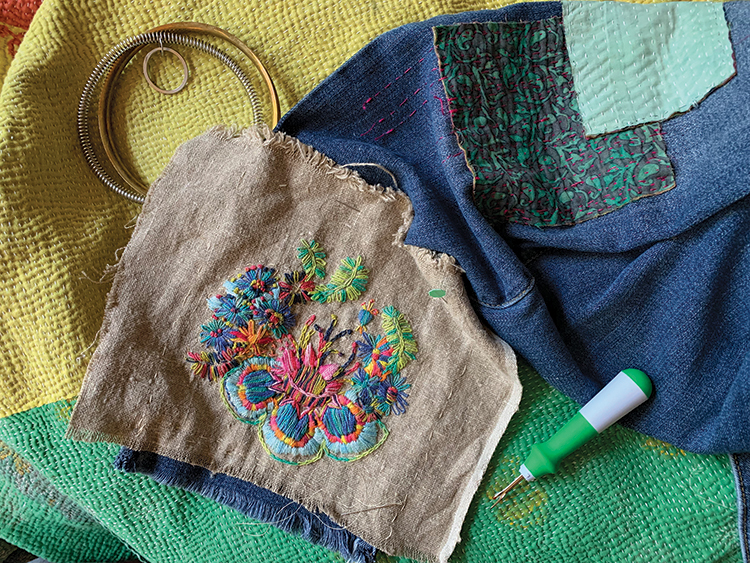
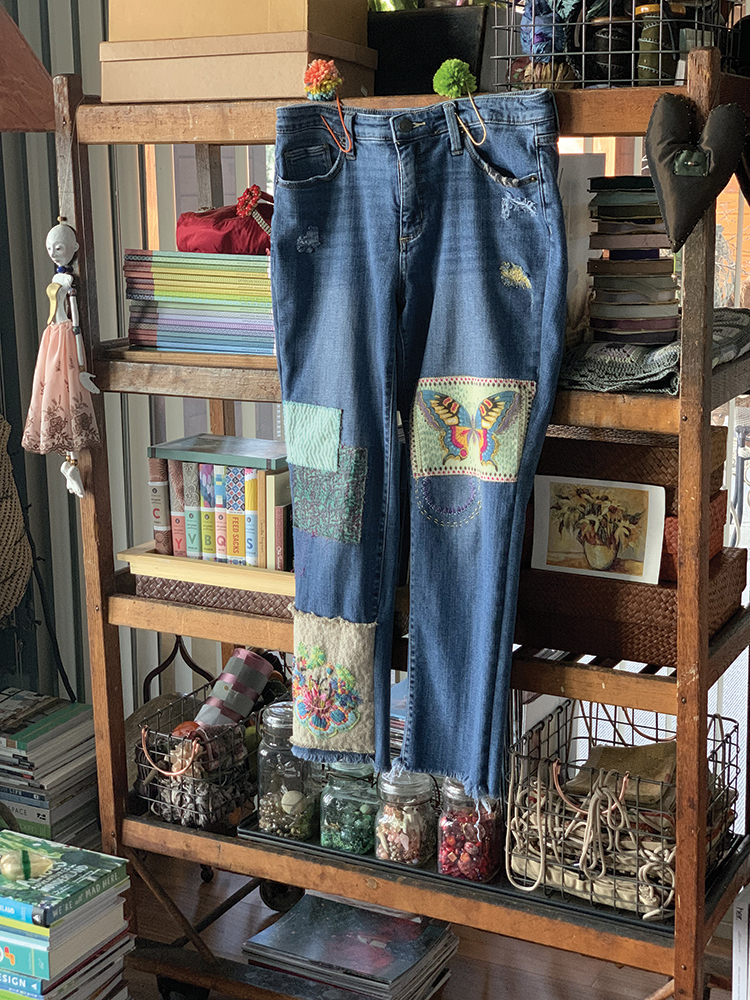
If you are interested in having Michele stitch a pair of your jeans, you can contact her through DM on Instagram or via her website.
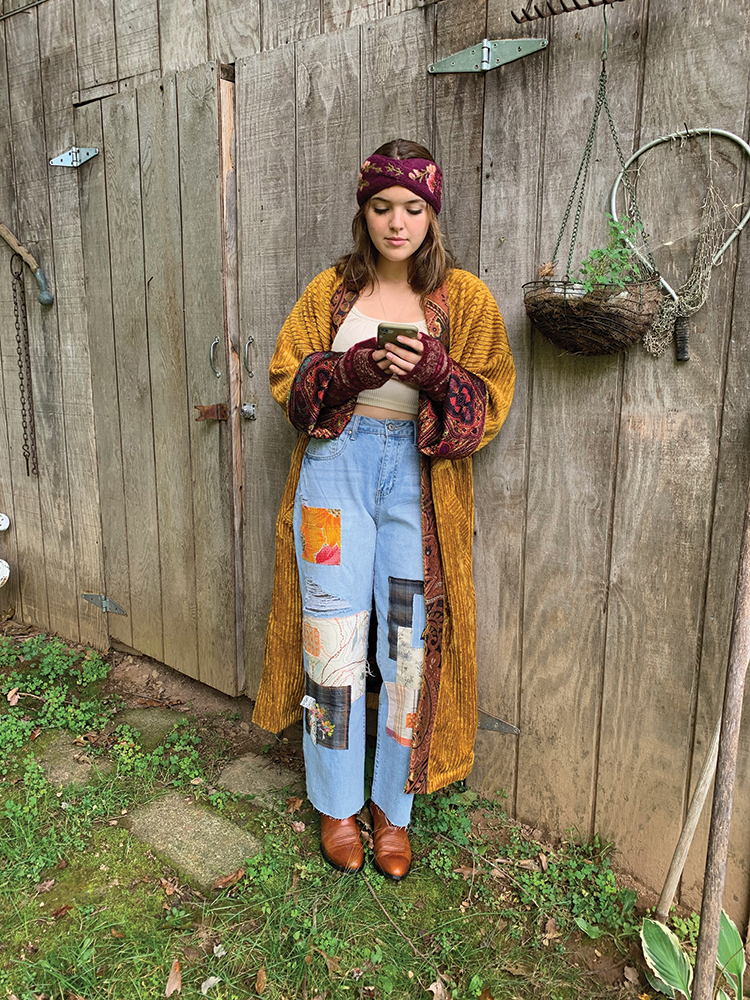

Sometimes things do come full circle, like patchwork jeans! I made them in high school, and it was also my side hustle! Patching and embroidering jeans, shirts, and jackets for myself and for other students. Seeing them on the runway, across the pages of high fashion magazines and on social media is really exciting and a bit nostalgic. I love that anyone can make these with a few helpful hints, scraps of fabric, and some fun vintage textiles. Oh, and a seam ripper!

What started as a blog post for the Oliso website (I am the Director of Content and Community Relations for them) turned into a marathon of making patchwork clothing for myself, family, and friends. Hand stitching plays a big part in much of my work, so I love incorporating it into my patchwork garments. When I go thrifting, I also look for embroidered shirts that I can cut up to use as appliques. Adding a paper-backed fusible web to the back will help it from fraying and looks like you did a lot more work than you really did.
Some of my friends have sent and entrusted me with their worn loved jeans to cut apart and stitch on. It’s kind of a blind faith type of thing since I really don’t take directions of what they want. I have part of them here with me, so I start building the design with things that remind me of them! However, with that said, I sometimes do have to limit myself and not go overboard. I do want them to wear them, after all.
Everyone has a pair of well-worn jeans or overalls, right? It’s a blank canvas to me.

Supplies

- Jeans, your own or thrifted
- Seam ripper, scissors, common pins, needles for 12 wt. thread, jeans needle (14) if you are using a sewing machine
- Oliso mini project iron
- Variety of 12 wt. thread or embroidery floss
- Heat n Bond or another paperbacked fusible web
- Patches, vintage laces, Kantha quilt squares, hand-printed linens, unusual scraps of fabrics, applique pieces, and orphan quilt blocks

Instructions
1. Take out one seam on each leg of your jeans with your seam ripper. Jeans often have one French seam, which is more difficult to remove. Pull all remaining threads after the seam is open and press flat.

2. Start arranging items on your jean legs. Cut textiles and layer until you achieve the design you are satisfied with. You can always add more later. Take a photo for placement.

3. Measure and cut the fusible paperback web about ¼” to ½” smaller than the patch.
4. With a hot dry iron, press the fusible web, paper side up, onto the backside of your patch. Let cool and remove paper back. You can crack the paper along one edge to peel easier.

5. Refer to your placement photo and press one patch onto your jeans/jacket/pillow or tote. The denim is thick, so you may need to hold the iron in place for several seconds. Be careful not to scorch and press from the inside as well. Continue layering.

6. Once everything is held in place, you can secure it with hand stitching or on your sewing machine. Leaving a border around the patches without the fusible web will make it easier to hand stitch.

7. You can also add embroidery or Sachiko stitches to your patches prior to adhering the fusible and to the jeans.

8. Turn your jeans inside out and sew up the side seam and hem.


If you are interested in having Michele stitch a pair of your jeans, you can contact her through DM on Instagram or via her website.
















